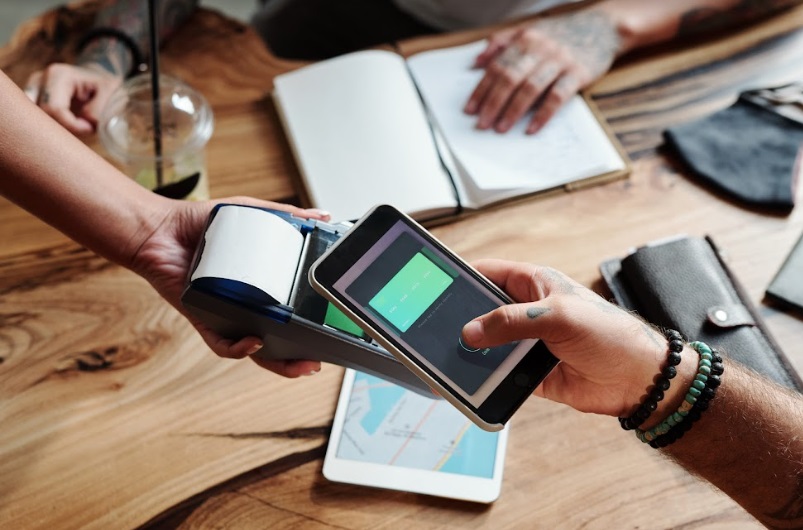The opportunities and evolution of the consumerization of B2B payments
- B2B payments are slowly but surely following in the footsteps of consumer payments, becoming faster and more secure.
- Visa, with solutions like Visa B2B Connect, is leading the way in streamlining cross-border transactions and improving efficiency, enhancing the business payment experience.

Darren Parslow is the Global Head of Visa Commercial Solutions at Visa.
While consumer payments have become increasingly digital over the past few years, business payments haven’t been as quick to evolve. That’s because business-to-business (B2B) payments work through a complicated supply chain and multiple software systems. This is changing, though, as businesses effectively piggyback on the advances made on the consumer side of payments to make B2B payments as quick, seamless, efficient, and secure. Welcome to the era of the consumerization of B2B payments.
B2B payments: A web of intricacies
Even in today’s increasingly digitized commercial payments landscape, B2B payment experiences often rely on outdated processes and infrastructure. Nearly 30% of business transactions in the U.S. are still done through cash and paper. Getting digital payments right for businesses means applying special attention to their complicated workflows and approval requirements, and working across the amalgamation of various systems and software packages they use.
Businesses are also hamstrung by how much money they have tied up in their supply chains. There’s as much as $3 trillion caught up in outstanding receivables in the United States, as estimated by PYMNTS. Roughly 30% of those receivables are then paid late, negatively impacting cashflow.
Cross-border payments have also long frustrated businesses. Businesses face settlement lags, lack of visibility, and expensive forex fees, among other factors. Just like consumers, businesses want and are seeking quick, cost-effective, and secure payment methods that meet their needs in the moment.
Businesses know what types of solutions they’d like to surmount to these challenges: They want more control over the flow of their money and greater transparency and traceability of their spending. Visa research found that 73% of small businesses said new forms of digital payments would be fundamental to their overall growth.
Paving the way toward digital B2B payments
Digitalization of payments has taken off in the last few years, quickly taking hold among consumers who now seek out payment methods that offer convenience, better security, and more visibility. And with digitalization rapidly gaining ground, the B2B world has taken notice. But there’s still work to be done to get B2B payments at the same level as its consumer counterparts.
If businesses can get digitalization right, it opens a number of benefits, including:
- Driving an increase in the number of clients and revenue
- Improving customer convenience and satisfaction
- Reducing operational risks
- Providing easier access to lending
As the largest payment network in the world, Visa provides products, services, and programs that go beyond payment tools and help businesses – from small- and micro-businesses to large enterprises –be more competitive. Visa’s full suite of payment services – including Visa Savings Edge, Instant Savings Offers, and Visa Spend Clarity for Business – is designed to help businesses stay resilient, manage cashflow, develop financial acumen, and save both time and costs.
At Visa, we’re looking for new ways to achieve efficiency, convenience, and security of payments to help businesses of all sizes move money without limitations of existing or legacy processes.
Case Study: Visa B2B Connect
Visa B2B Connect is a multilateral B2B cross-border (high value) payments network designed to facilitate transactions directly from banks of origin to beneficiary banks, helping remove friction, streamline settlement, and optimize payments for financial institutions and their clients. Launched commercially in 2019, Visa B2B Connect has focused on enhancing its network capabilities, bringing in new bank partners, and growing the network’s global footprint. The solution is making progress, too. The network is live in 100+ countries and territories, with payments being routed to 90 countries globally. In 2022, TD became the first Canadian financial institution to join Visa B2B Connect. In 2021, Azerbaijan became the first country in the CEMEA region to launch Visa B2B Connect in partnership with Kapital Bank. That same year, CIBANCO became the first bank in Mexico, Latin America, and the Caribbean to implement Visa B2B Connect.
It’s clear that the ‘consumerization of B2B’ is underway. Visa is focused on doing its part to speed the uptake of digital tools and payments in the B2B space. We are committed to building out its network and providing more banks and their corporate customers with modern cross-border payments.
We firmly believe we are at a tipping point when it comes to digitalization. As an industry, players in the payments technology space have the capacity to meet and exceed the expectations of businesses across all payment flows, removing barriers for end-users and improving efficiencies while growing revenue.
But there’s still work to be done to get B2B payments at the same level as its consumer counterpart. Together, players in the payments technology space have the capacity to meet and exceed these expectations across all payment flows, removing barriers for end-users. Adopting solutions that not only improve efficiencies, grow revenue, and cut costs, but also improve the experience of employees’ day-to-day work will be essential for any organization moving forward.


